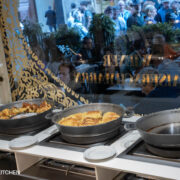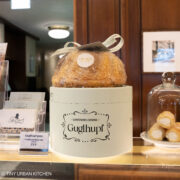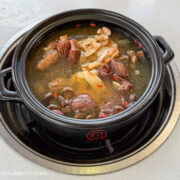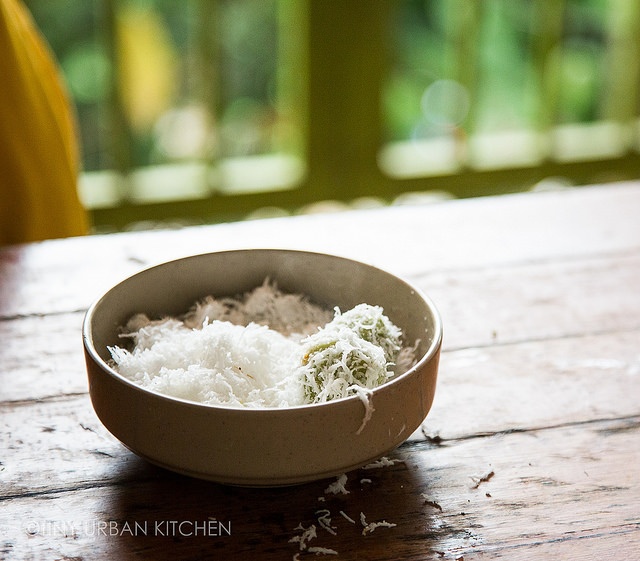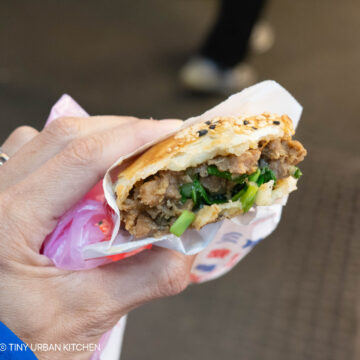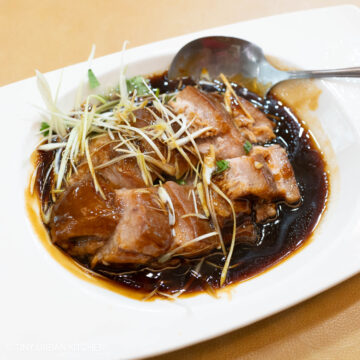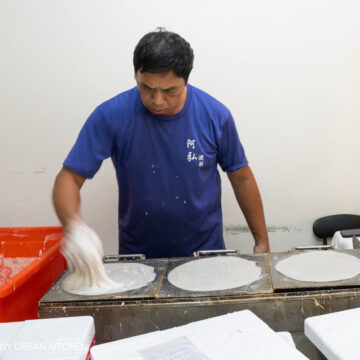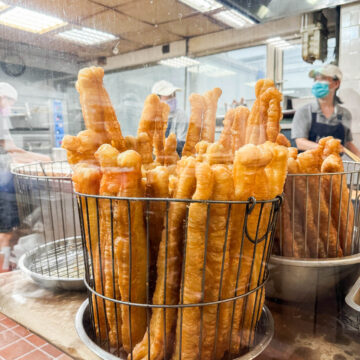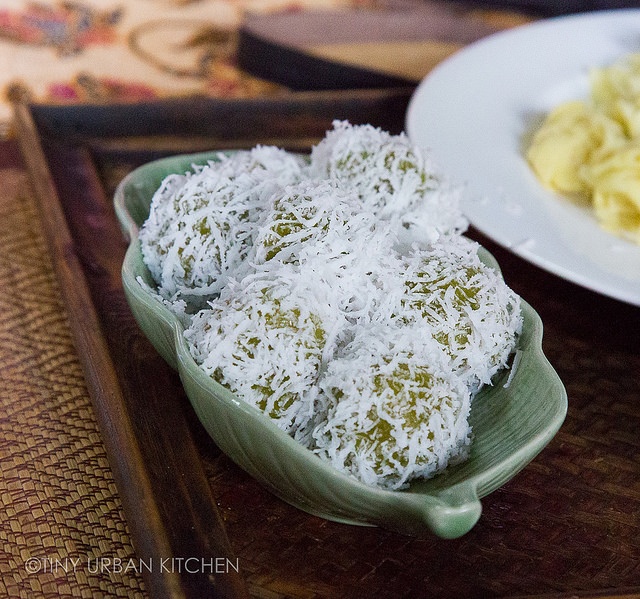
This is the ninth post in the Malaysia and Singapore! series. Other posts in this series include Lot 10 Hutong - Kuala Lumpur's Most Famous Hawker Stalls Under One Roof, LaZat Malaysian Home Cooking, Otak, Otak Fish Dumplings in Banana Leaf, Little Penang Cafe + Visiting the Petronas Twin Towers, Roti Jala - Malaysian Lacy Pancake, and Nonya Malaysian Chicken Curry. and Bijan.I have a horrible weakness when it comes any dessert made with glutinous (sticky) rice. Whether it be simple homemade mochi, matcha mochi cupcakes, or tang yuan (boiled rice balls in a soup, like red bean soup), I just can't get enough of its addictive chewy texture.
It's no surprise, therefore, that this phenomenal Malaysian dessert called onde onde became one of my favorite new discoveries during my trip to Southeast Asia.
Just imagine: rice balls flavored with aromatic, floral pandan, filled with warm palm sugar, and covered with fresh coconut shavings. The palm sugar melts a bit from the boiling process, which results in a fantastic "pop" of flavor when you bite into one of these things. I absolutely loved it, and am thrilled to discover this dessert.
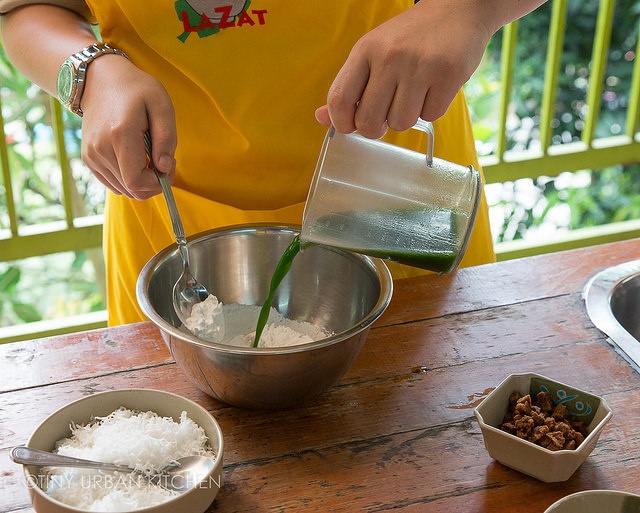
Pandan is a flavor that comes from the pandanus plant, also known as the screwpine. The leaves of this tropical plant have a sweet aroma, almost like vanilla, and are often used in Southeast Asian desserts.
In Malaysia, where pandan leaves are available everywhere, people blend fresh leaves with water to make "pandan juice". Without access to the fresh leaves, it's possible instead to use a few drops pandan flavoring essence in water.
The first step is to place glutinous rice flour in a mixing bowl and slowly add pandan juice. Mix together until a kneadable ball of dough forms.
According to our instructor, rice flour is one of the most finicky flours when it comes to the way it absorbs and mixes with water. Humidity, temperature, speed of mixing, and other unknown factors greatly affect how much water you need to add. The amount varies all the time, so use your judgment to decide when the ball of dough is considered "kneadable."
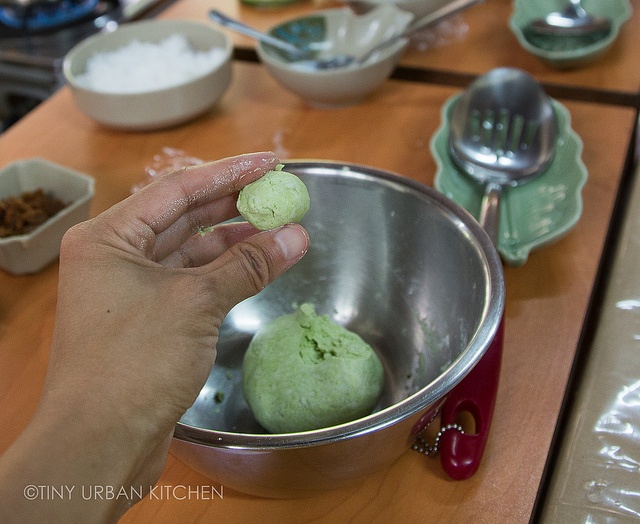
Knead lightly and stop the moment it seems right. You don't want to overwork the dough.
Once your ready to start forming rice balls, heat up a pot of water to boiling.
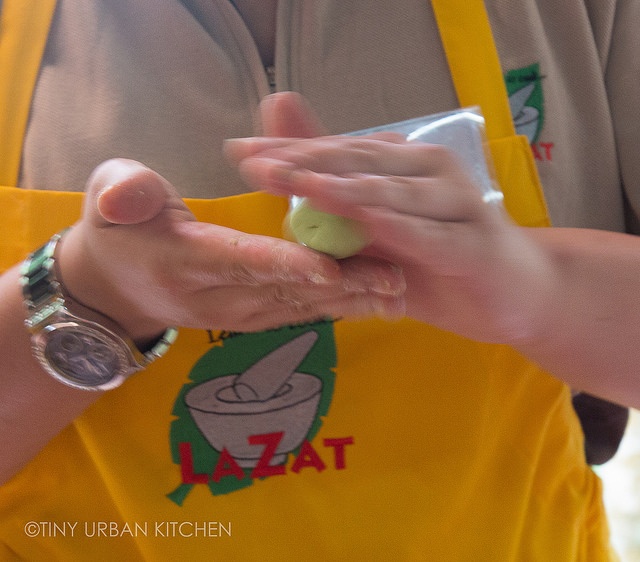
Form small balls by pulling a piece of dough and rolling it between your fingers. Ideally don't use your palms because they are warmer and will soften the dough more quickly.
Flatten the sphere slightly and fill each one with a piece of palm sugar. Close it up and re-roll it back into a sphere.
Our instructor said, "I like to fill it with lots of palm sugar because I love sugar."
At first I thought that she just had a sweet tooth, unlike me. Boy, once I tasted the deep, rich intensity of palm sugar from Malaysia, I totally changed my mind. Palm sugar in Malaysia is so different from anything I've found in the States. It's super dark, intensely deep in flavor, and fantastic in this dessert. I especially love how the slightly melted palm sugar bursts in your mouth with a huge pop of flavor when you take a bite.
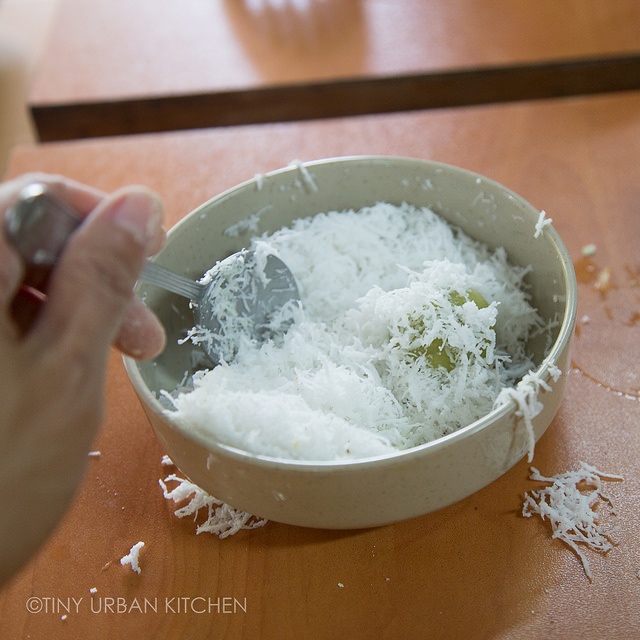
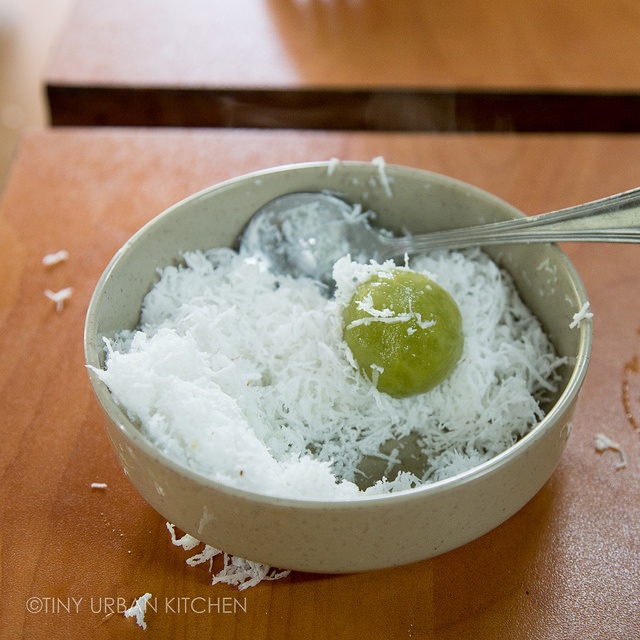
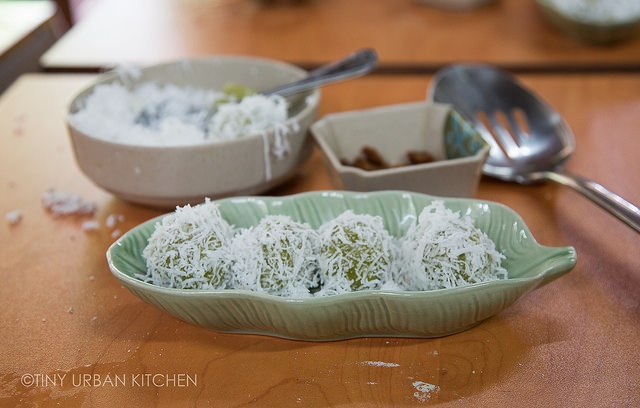
Your saucepan full of water should be boiling by now. Drop the ball into the boiling water and let ut cook it until it floats. Once it's floating, pick it up with a slotted spoon, drain well, and throw it into a bowl of fresh coconut shavings. Cover with coconut, set it aside on a plate.
You can do this serially - as you continue to make balls, drop them into the water and take them out as soon as they are done (to make room for new ones that need to boil!)
Let cool and serve!
Notes
I know that the ingredients for this recipe may be a bit challenging to find for many of us. I think it's not too hard to find dried pandan leaves or pandan flavoring, though from what I've been told, use small amounts of the flavoring because it is quite potent! One of these days I may try recreating this recipe with ingredients I can find in the U.S. Maybe I could try using pandan oil and brown sugar or something.
Onde Onde
Source: LaZat Malaysian Home Cooking
Serves 1-2 people
Makes 8-10 rice balls
Pandan Juice
10 large pandan leaves
100 mL water
Rinse pandan leaves and cut them into 1 inch pieces. Blend leaves and water in a blender. Pour through a fine sieve strainer and discard solid.
Ingredients
100g (3.5 oz) glutinous rice flour
100 mL (3.4 oz) pandan juice
60g (2.1 oz) palm sugar
60 g (2.1 oz) grated coconut mixed with a pinch of salt
700 mL (24 oz / 3 cups) water
Place glutinous rice flour in a mixing bowl and slowly add pandan juice and mix together until it forms a kneadable ball of dough. This amount varies all the time, so use your judgment.
Knead lightly
Form small balls. Flatten them slightly and fill each one with a piece of palm sugar. Close it up and roll it into a sphere.
Bring water in a saucepan to a boil and slowly cook each ball as you form it and cook it until it floats.
All Rights Reserved








